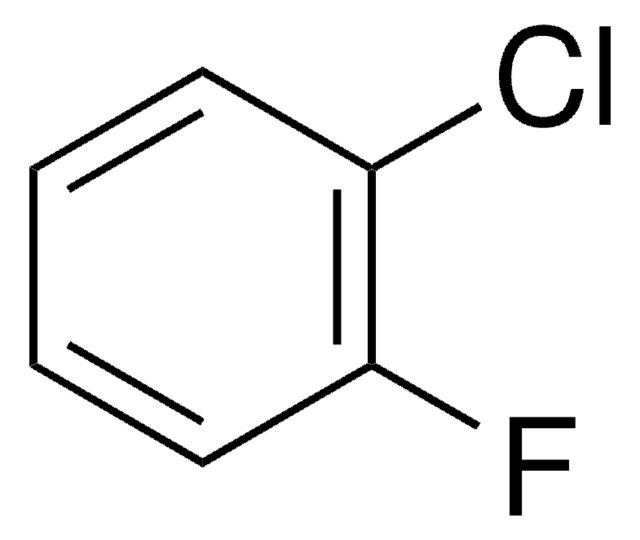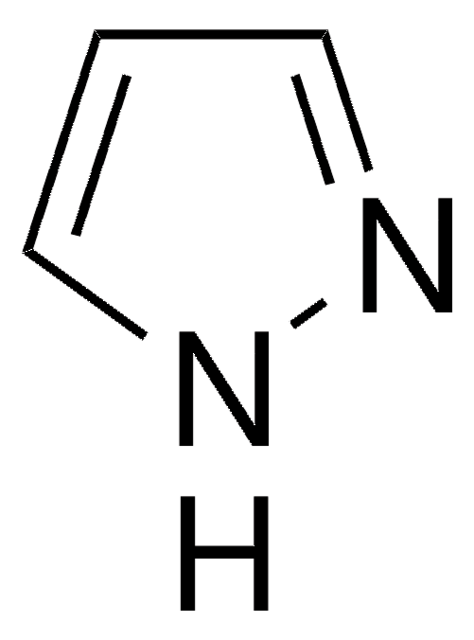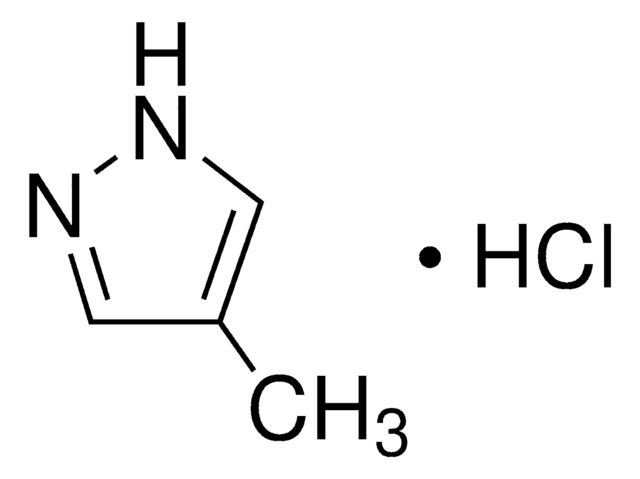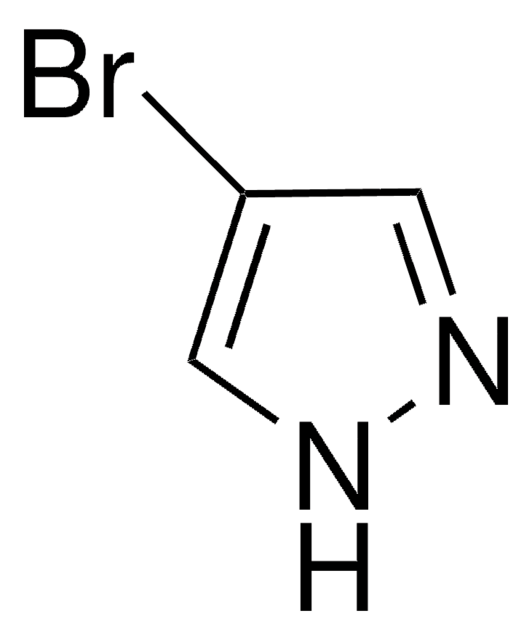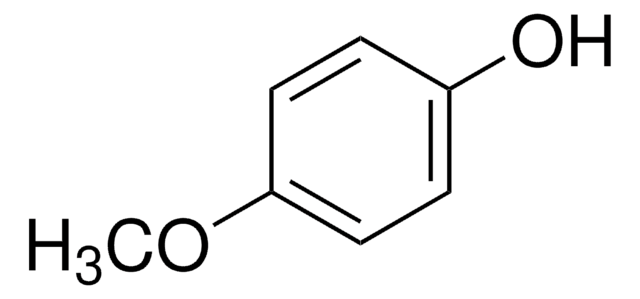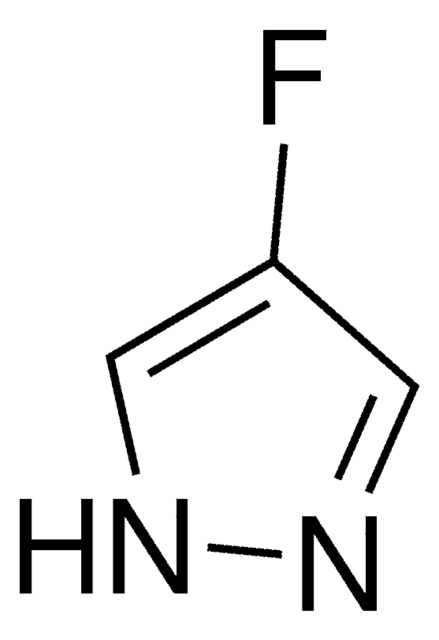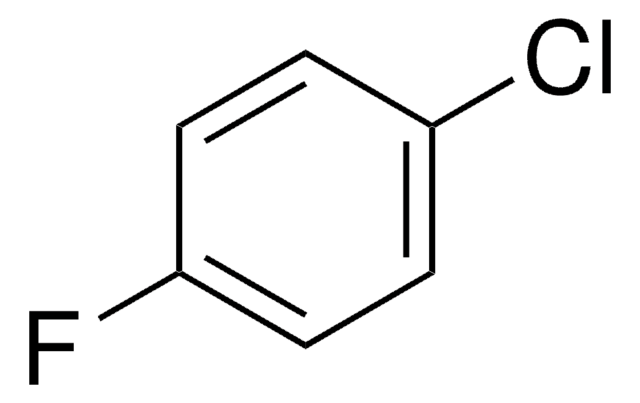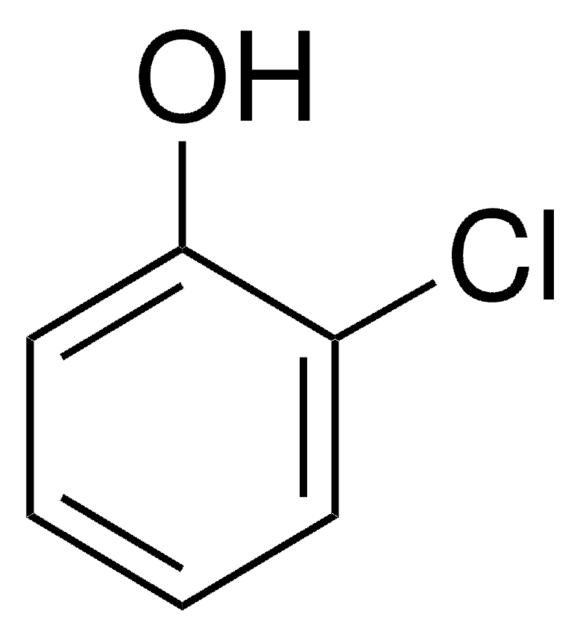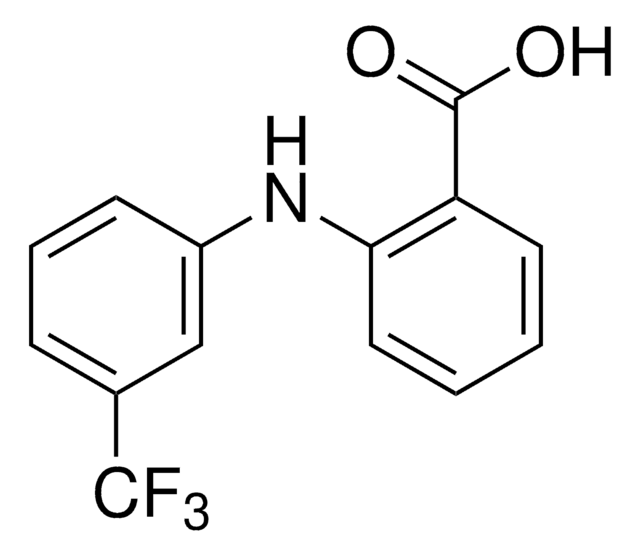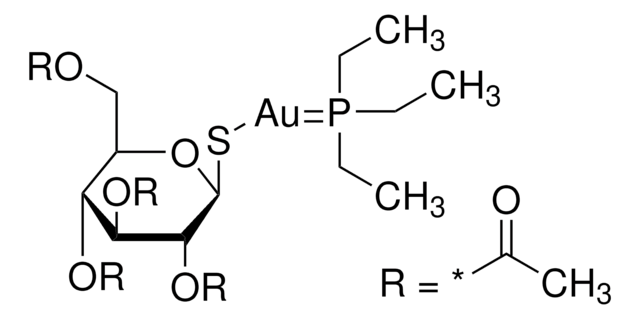222569
Fomepizole
99%
Sinônimo(s):
4-Methylpyrazole
About This Item
Produtos recomendados
Ensaio
99%
índice de refração
n20/D 1.495 (lit.)
p.e.
99-100 °C/6 mmHg (lit.)
solubilidade
alcohol: soluble(lit.)
water: soluble(lit.)
densidade
0.993 g/mL at 25 °C (lit.)
cadeia de caracteres SMILES
Cc1cn[nH]c1
InChI
1S/C4H6N2/c1-4-2-5-6-3-4/h2-3H,1H3,(H,5,6)
chave InChI
RIKMMFOAQPJVMX-UHFFFAOYSA-N
Informações sobre genes
human ... ADH1A(124) , ADH1B(125) , ADH1C(126)
Procurando produtos similares? Visita Guia de comparação de produtos
Descrição geral
Aplicação
- A reactant to prepare 4-methyl-1-phenyl-1H-pyrazole by reacting with bromobenzene via N-arylation using a copper catalyst.
- A starting material for the synthesis of 4-methyl-3(5)-nitropyrazole by nitration.
- A ligand in the preparation of gallium(III) complex of 4-methylpyrazole as potential antitumor and antiviral agent.
Ações bioquímicas/fisiológicas
Palavra indicadora
Warning
Frases de perigo
Declarações de precaução
Classificações de perigo
Acute Tox. 4 Oral - Eye Irrit. 2 - Skin Irrit. 2 - STOT SE 3
Órgãos-alvo
Respiratory system
Código de classe de armazenamento
10 - Combustible liquids
Classe de risco de água (WGK)
WGK 3
Ponto de fulgor (°F)
204.8 °F - closed cup
Ponto de fulgor (°C)
96 °C - closed cup
Equipamento de proteção individual
Eyeshields, Faceshields, Gloves, type ABEK (EN14387) respirator filter
Escolha uma das versões mais recentes:
Já possui este produto?
Encontre a documentação dos produtos que você adquiriu recentemente na biblioteca de documentos.
Os clientes também visualizaram
Nossa equipe de cientistas tem experiência em todas as áreas de pesquisa, incluindo Life Sciences, ciência de materiais, síntese química, cromatografia, química analítica e muitas outras.
Entre em contato com a assistência técnica
